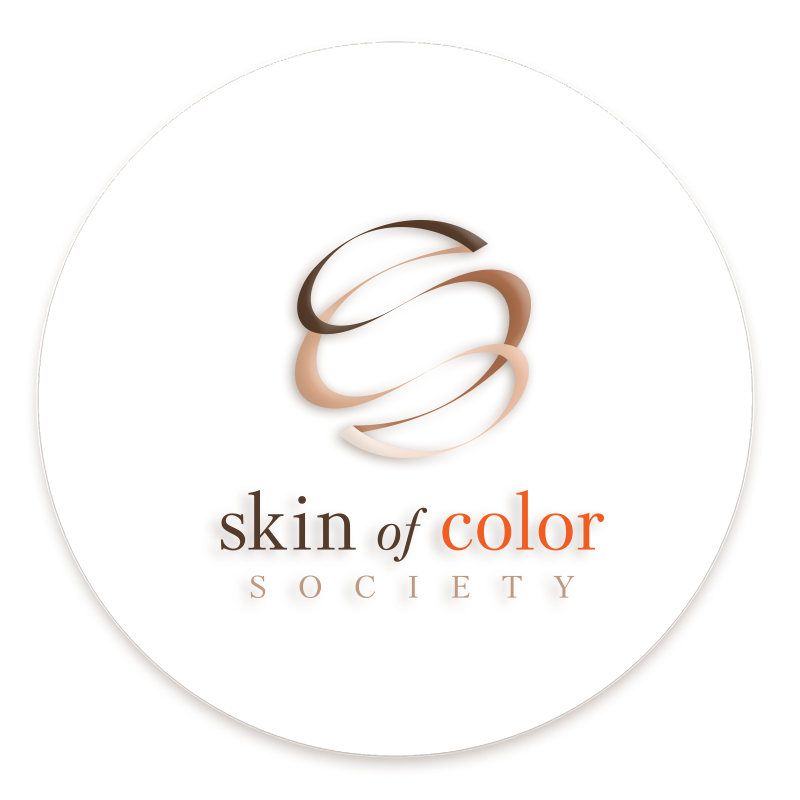Nonmelanoma Skin Cancer (NMSC)
Jennifer Turnham, BS and Kesha Buster, MD (edited by Cather McKay MD)
What is Non-Melanoma Skin Cancer?
Skin cancer is categorized as melanoma or non-melanoma skin cancer (NMSC). The two most common types of NMSC are squamous cell carcinoma (SCC) and basal cell carcinoma (BCC). Overall, skin cancer is the most common type of cancer in the United States and makes up approximately 35-45% of all cancers in Caucasians, 4-5% in Hispanics, and 1-4% in Asians, Asian Indians and African-Americans. Although skin cancer is less common in those with skin of color compared to those with light skin, it is often diagnosed at later stages and therefore can be more deadly. . It is important for people of all races to be aware of the risks of both melanoma and non-melanoma skin cancer..
Squamous cell carcinoma is the most common skin cancer in African-Americans and Asian Indians and the second most common skin cancer in Hispanics, Asians (Chinese and Japanese) and Caucasians. Basal cell carcinoma is the most common skin cancer in Hispanics, Chinese and Japanese Asians, and Caucasians. Though BCC can grow large and be locally destructive, it rarely spreads.SCC of the skin has a slightly higher risk of spreading than BCC, particularly if large or on locations such as the lip or ear.
What is the cause of NMSC?
NMSC has many causes. Ultraviolet (UV) radiation from sunlight, chronic wounds or inflammation in the skin,human papillomavirus (HPV), and a decreased immune system (for example after organ transplantation) all contribute to the development of NMSC. UV radiation from the sun is the main cause of both SCC and BCC in Caucasians, Hispanics, and Asians. However, the most important factors for the development of SCC in African-Americans are chronic scarring, trauma, and inflammation (for example, burns, non-healing leg ulcers, or skin lupus), rather than sun exposure. The main risk factor for BCC in all races is UV radiation.
How do I know if I have NMSC?
SCC and BCC are growths on the skin that may or may not cause symptoms such as bleeding or pain. Both tend to. grow over time. In those with skin of color, SCC is more common in skin that is not exposed to the sun,such as the legs, anus, and genitals whereas in lighter-skinned people, sun-exposed skin is the most common site. BCCs most often occur in the head and neck area in all skin types. These most commonly are painless, shiny, pink or dark bumps. Like SCCs, BCCs may bleed easily. In people of color, more than 50% of BCCs have pigment (dark color). In Caucasians,BCCs are usually pink, and only 5% are pigmented. If any new skin growth is painful, bleeding, growing, changing, or is otherwise concerning to you, it should be evaluated by your dermatologist.
What are treatments for NMSC?
There are many treatment options for NMSC. The most appropriate form of treatment depends on the size of the tumor, location, and type of skin cancer. Your dermatologist will help determine which treatment is right for you.
Surgical removal called an excision is the most common way to treat NMSC. It is effective in treating small, low-risk tumors.
Mohs micrographic surgery (MMS) is especially useful for large skin cancers and those in areas such as the face. This method allows surgeons to make sure all parts of the skin cancer are removed by mapping the edges of the excised tumor under a microscope on the day of surgery.
Electrodesiccation and curettage (ED&C) is another widely accepted method of treating low-risk NMSC. During this procedure, an electrical current is used to destroy tissue that is subsequently scraped off using a slim sharp instrument known as a curette. This method usually leaves a round scar.
Cryosurgery is another technique used in the treatment of select NMSC. This technique uses liquid nitrogen to freeze the tumor tissue. After freezing, the area typically blisters before healing in three to four weeks.
Nonsurgical options
Some early or low-risk skin cancers can be treated with prescription creams. Topical immunomodulators, such as imiquimod, have gained recent FDA approval for treatment of thin NMSC. These treat the skin cancer by boosting the local immune system to kill the tumor. A topical chemotherapy cream called 5-fluorouracil can also be used to treat select NMSCs. Another option is photodynamic therapy (PDT), which is a combination of a topical medication and a specialized light performed in a dermatology clinic. Topical options have the benefit of treating NMSC with less risk for scarring. However, these treatments cannot be used on large or deep tumors, and in general have a lower cure rate and higher chance of recurrence than Mohs surgery, excision or ED&C. Lastly, radiation is used on large or high-risk tumors that cannot be completely treated with surgery.
Additional Resources
The Skin Cancer Foundation
American Cancer Society






